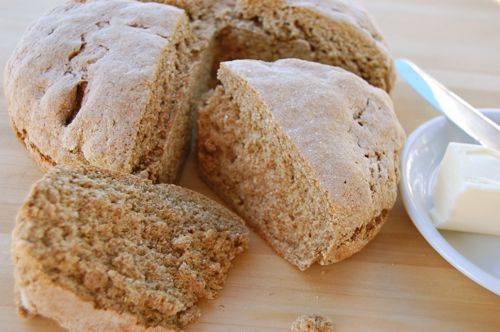Making Soda Bread

Don’t think you have time to make fresh bread for St. Patrick’s Day today? Trust me, you do. Just check out how fast and easy a traditional soda bread is to make. Preheat your oven to 425 half an hour before you begin. When the oven is hot, combine all your dry ingredients in a large bowl (make sure your soda is fresh). Check out how coarse this flour is: look around the edges of the bowl, see those little granules? Those are pieces of barely ground wheat berries. This is serious hippie flour — and perfect for a bread like this.
READ ON